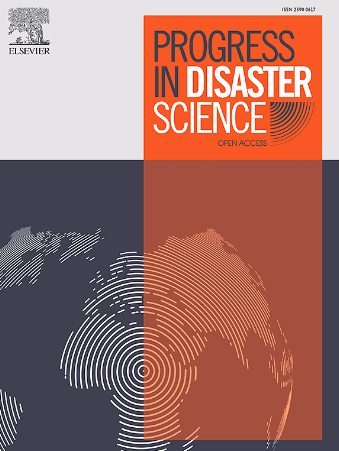提高抗灾能力:重新定义易受灾农村社区的生计系统
IF 3.8
Q3 ENVIRONMENTAL SCIENCES
引用次数: 0
摘要
本研究强调需要对现有文献进行批判性审查,以确定社会模型的促成因素和障碍。它不是仅仅关注脆弱性,而是试图解构和重新定义复原力,特别是在当前研究尚未充分探索的社区生计系统的背景下。通过定性方法,该研究结合了批判性和建构主义范式,开发了社会模型,通过其生计系统增强易受灾社区的复原力。目标是为农村社区生计创造一种经得起挑战的创新、参与性和可持续模式。这个模型的核心是资本和社会资本的积累。该研究为灾害易发地区的利益相关者和社区提供了战略和实用的建议,以通过利用生态、社会、经济和文化潜力,重建更强大的生计系统。它对社区生计系统的分析框架以及处理受灾地区生计问题所需的战略和业务规划具有重大影响。社会建模是在这些社区规划和实施社会保护和经济缓解的关键战略。本文章由计算机程序翻译,如有差异,请以英文原文为准。
Resilience rising: Redefining livelihood systems in disaster-prone rural communities
This study emphasizes the need for a critical review of existing literature to identify the enablers and barriers to social modeling. Rather than solely focusing on vulnerability, it seeks to deconstruct and redefine resilience, particularly in the context of livelihood systems within communities that have been underexplored in current research. Through a qualitative approach, the study combines critical and constructivist paradigms to develop social modeling that enhances the resilience of disaster-prone communities via their livelihood systems. The goal is to create an innovative, participatory, and sustainable model for rural community livelihoods that can withstand challenges. Central to this model is the accumulation of both capital and social capital. The study offers strategic and practical recommendations for stakeholders and communities in disaster-prone areas to rebuild more robust livelihood systems by harnessing ecological, social, economic, and cultural potentials. It has significant implications for the analytical framework of community livelihood systems and the strategic and operational planning needed to address livelihoods in disaster-affected areas. Social modeling is a critical strategy for planning and implementing social protection and economic mitigation in such communities.
求助全文
通过发布文献求助,成功后即可免费获取论文全文。
去求助
来源期刊

Progress in Disaster Science
Social Sciences-Safety Research
CiteScore
14.60
自引率
3.20%
发文量
51
审稿时长
12 weeks
期刊介绍:
Progress in Disaster Science is a Gold Open Access journal focusing on integrating research and policy in disaster research, and publishes original research papers and invited viewpoint articles on disaster risk reduction; response; emergency management and recovery.
A key part of the Journal's Publication output will see key experts invited to assess and comment on the current trends in disaster research, as well as highlight key papers.
 求助内容:
求助内容: 应助结果提醒方式:
应助结果提醒方式:


